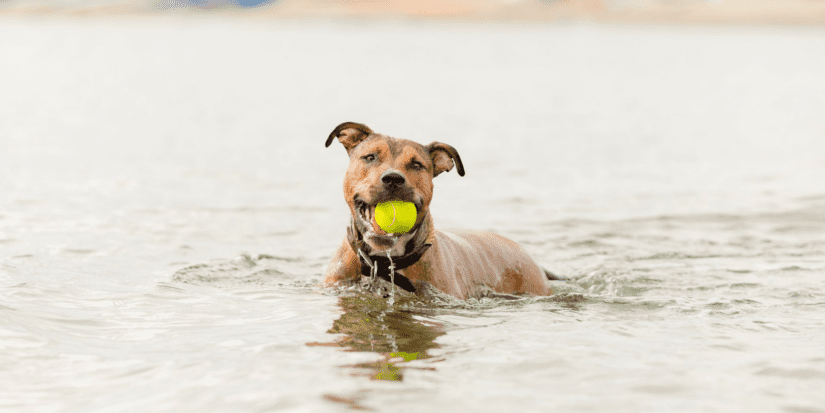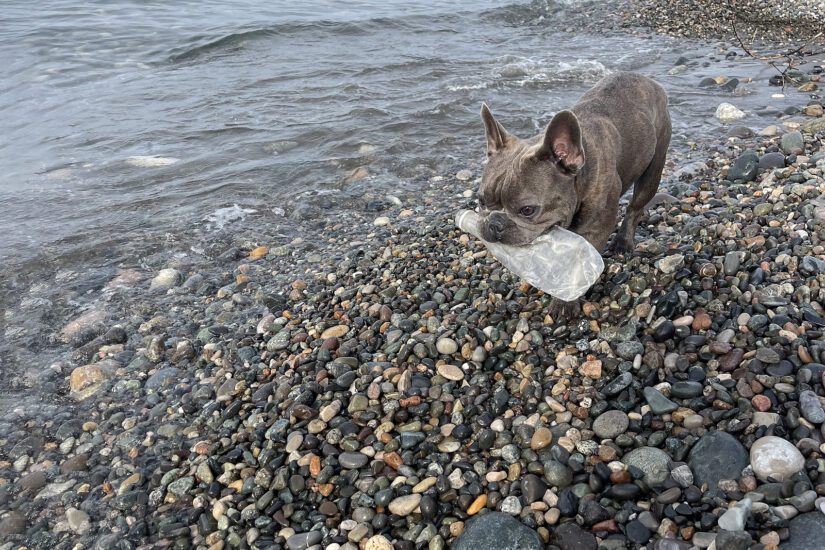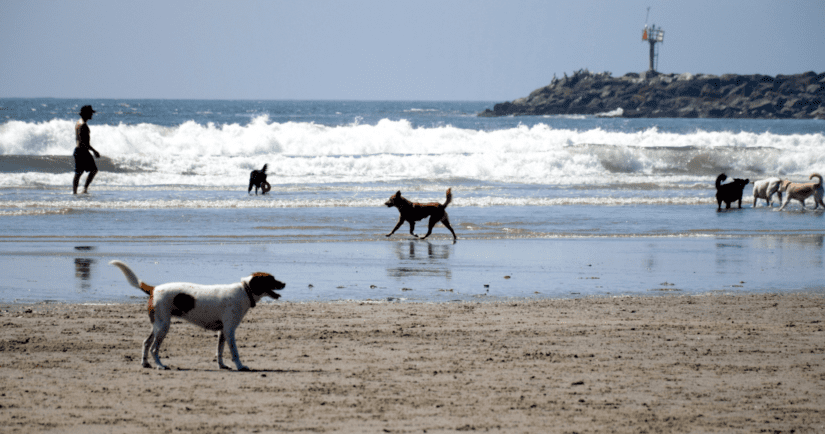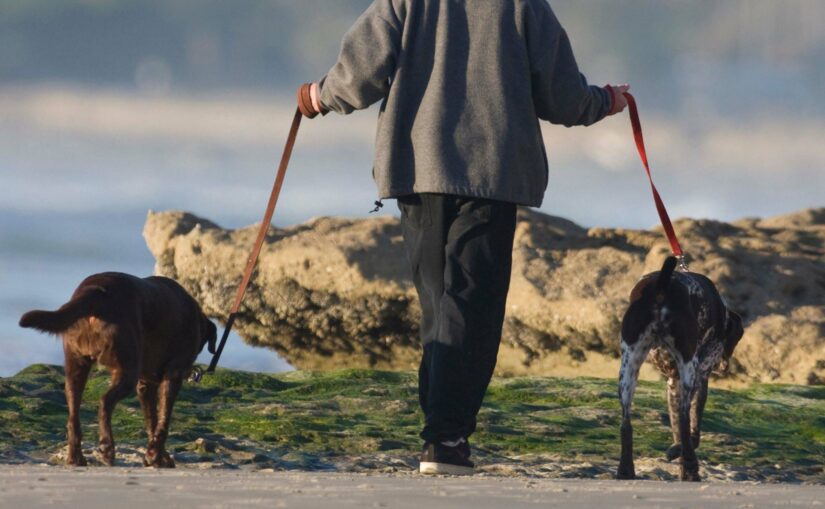Spending some time at a dog-friendly beach with your furry friend is one of life’s little pleasures. Watching the joy on their face as they run into the ocean to chase a stick, dig in the sand or just sniff all of the great smells, is a great experience for both the dog and their guardian.
However, a visit to the beach can turn into a trip to the vet if you aren’t careful. There are many things at the beach that can cause your pet to become ill. Some are so serious that they can be lethal.
“Pet guardians need to watch their dogs very carefully when they are at the beach,” says Dr. Kyla Townsend, veterinarian at the BC SPCA. “Dogs are very good at finding the one thing they shouldn’t be eating and that can result in illness requiring veterinary attention.”

1. Wild seaweed
Seaweed found on the beach is very different from the processed seaweed that you may have read is safe for your pet to consume.
During the warm summer months, wild seaweed will dry out and shrink in size. When your dog ingests it, it can combine with the water in the stomach and expand, potentially causing a severe blockage. Additionally, pollutants and other debris present on the seaweed can be harmful for your dog if ingested.
2. Saltwater
When dogs are playing fetch in the water or swimming, they can ingest large amounts of salt water. A sudden ingestion of large quantities of sodium (salt) can cause significant problems in your dog’s brain and can lead to death. Your dog can also ingest salt by grooming themselves after being in salt water, and by eating seaweed. That is why it is so important to rinse your dog off with fresh water after time spent on the beach.

3. Tides and currents
Know the water conditions. Rough waves and strong currents can make swimming too dangerous for your dog.
4. Dead things and sharp objects
One of the reasons dogs love going to the beach is all the things you can find there. Shells, crab legs and dead creatures are fun to lick and play with, but could cause bacterial infections, cracked teeth and intestinal obstructions if ingested. Sharp objects like broken seashells and rocks could cut your dog’s paw pads.
5. Garbage
From cigarette butts to alcohol and food, there is a lot of garbage that gets left behind after a day or night at the beach. Both alcohol and nicotine are toxic to dogs. Even a small cigarette butt can mean serious illness or death for a small dog if ingested and some guacamole left behind in a takeout food container can make your dog very ill.

6. Sand
Whether you are wriggling your toes in it or your dog is digging in it, sand is a big part of what makes spending time at the beach so much fun. However, as much fun as it is, sand can be very dangerous for your dog. If your dog ingests too much, they can suffer from sand impaction. This typically shows up as constipation in the dog, but if the dog is dehydrated and the sand becomes compact, it can cause an intestinal obstruction that could become life threatening. Another good reason to rinse off your dog and make sure their paw pads do not have any sand on them that your dog can lick and ingest.
7. Other dogs
Just like dog parks, dog-friendly beaches attract high numbers of dogs, many off-leash. Watch for any signs of aggression and keep your dog leashed up if they haven’t been trained at recall or have any anxiety around strange dogs.

8. Heatstroke and sunburn
With spring and summer temperatures getting warmer each year, we need to be very careful about when we take our dog to the beach. When temperatures and the UV index are at their peak (typically between 11 a.m. and 3 p.m.), we should be keeping our dogs indoors where they can remain cool and avoid exposure to the sun’s harmful rays.
Remember to take fresh water with you when you visit the beach so your dog doesn’t overheat and won’t be tempted to drink salt water if they get thirsty. If you plan to sit at the beach with your dog (only when temperatures are at their coolest), make sure you provide shade for them. And don’t forget about sunscreen for your dog! Dogs can suffer from sunburn too so use a pet-safe sunscreen on their nose, ears and any area that doesn’t have a lot of fur.
Know the signs of heatstroke and give your dog time to rest in the shade.
Signs of heatstroke include:
- excessive panting
- increased heart rate
- confusion or disorientation
- poor appetite, vomiting or diarrhea
- bright red gums
- body temperature higher than 40 degrees celsius
- collapse, seizure, or coma
Prevention is key
The beach is a great place for pets and their guardians. Most of these beach dangers are preventable by doing a few simple things:
- keep your dog on a leash
- make fresh water available
- pay attention to what they might be trying to ingest
- rinse your dog’s fur and clean their paws thoroughly

What to look for after a trip to the beach
Even if you have taken all of the precautions, your dog might still get themselves into trouble. If your dog’s behaviour changes after spending time at the beach, keep a close eye on them. Symptoms that require immediate veterinarian attention include:
- lethargy
- vomiting or diarrhea
- seizures
- bleeding
- limping
